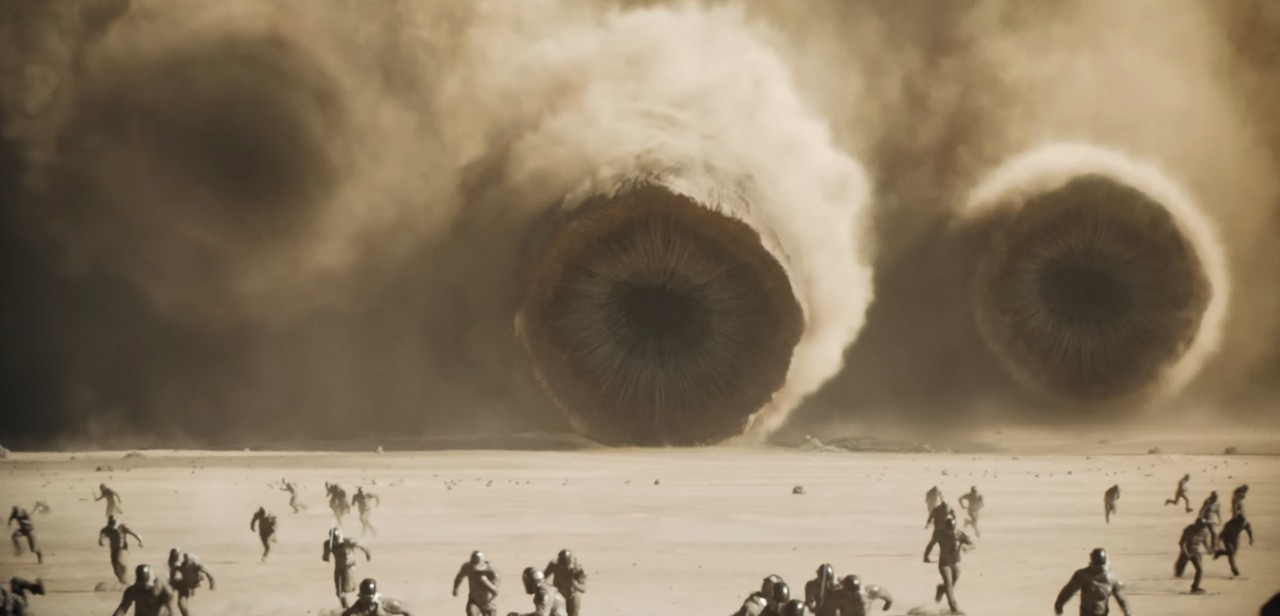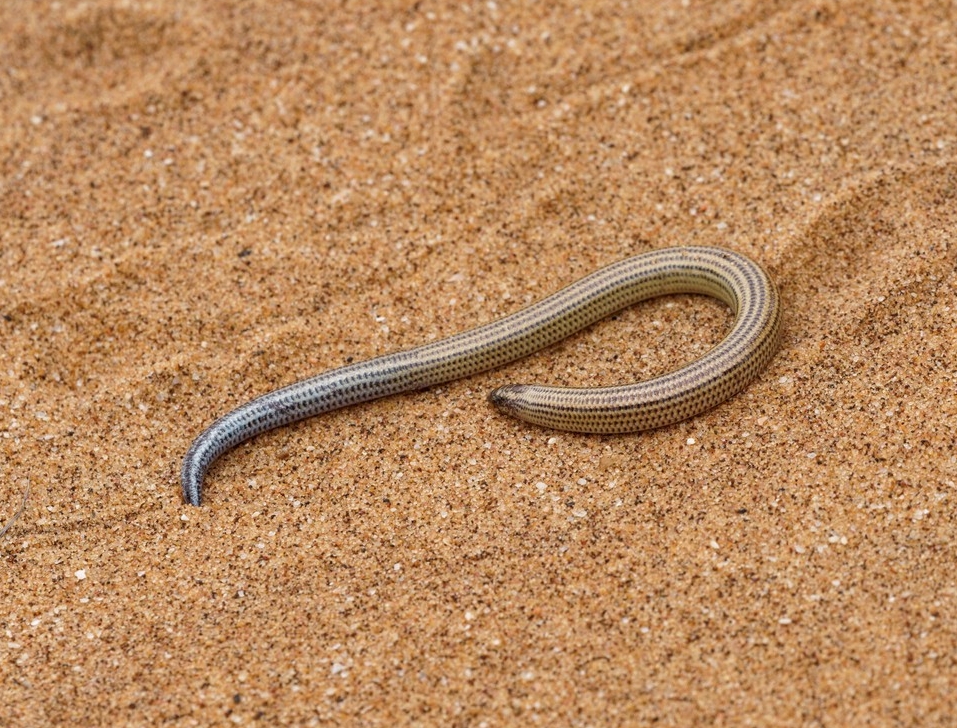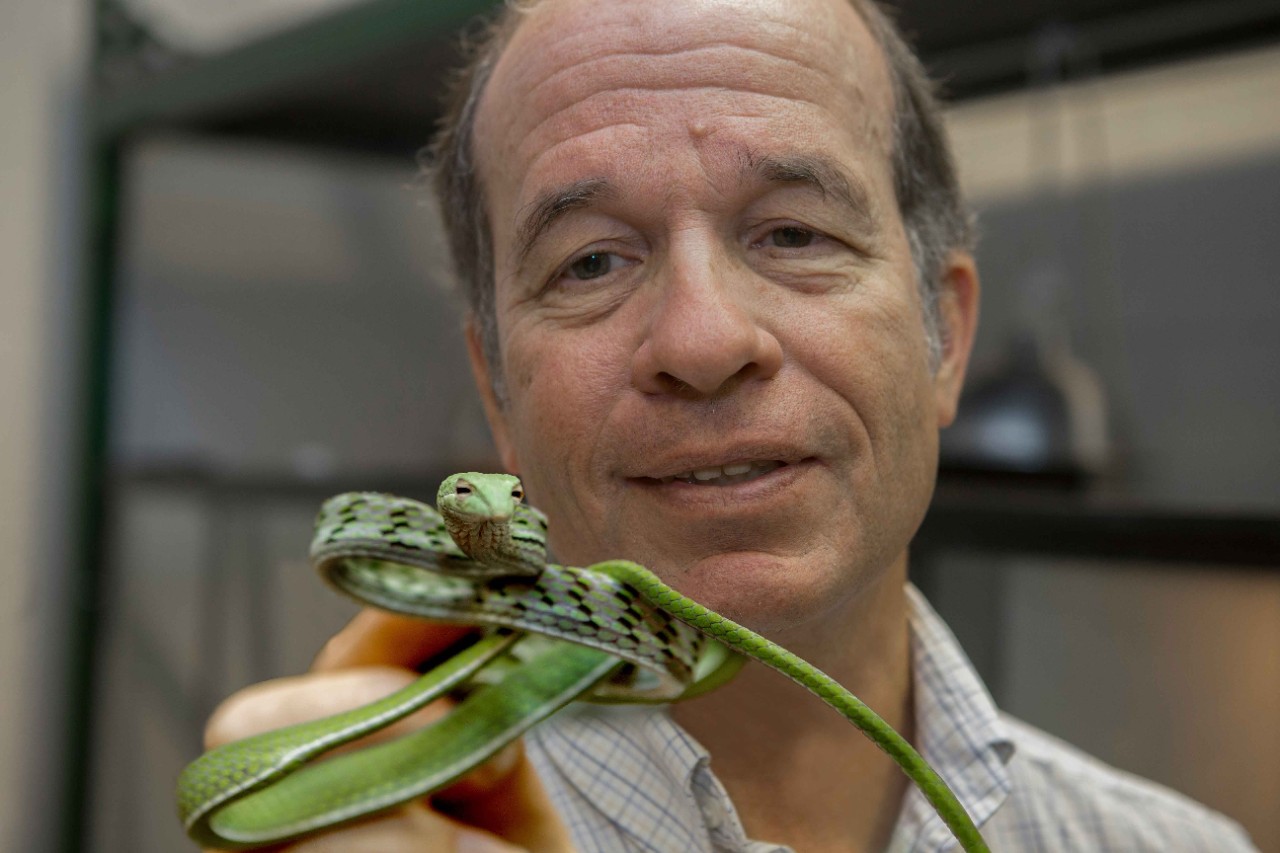
Slate: Are the sandworms of 'Dune' really worms?
UC snake expert sheds light on the locomotion of Frank Herbert's creepy desert monsters
Are the sandworms depicted in the science fiction blockbusters “Dune” and “Dune: Part II” really worms?
Slate spoke to a University of Cincinnati biologist to see if there are real biological analogies to the wormlike leviathans depicted in the Frank Herbert books and movies.
UC College of Arts and Sciences Professor Bruce Jayne is an expert on snakes and the fascinating ways they move, swim and climb without benefit of limbs.

UC Professor Bruce Jayne says the sandworms of Dune are most like legless lizards that burrow in sand dunes. Photo/mlharing/Unsplash
Jayne said Dune's sandworms don't move like earthworms, which propel themselves forward using fluid-filled sacs that expand and contract in synchrony.
Instead, the sandworms move in a straight line like an enormous python in an undulating, rippling movement called rectilinear locomotion.
“The skeleton is basically sliding inside of the skin,” Jayne told Slate.
But this locomotion isn't known for speed.
Jayne said the sandworms of Dune are fast-moving burrowers in the sand, which is more like the movement found in a family of legless lizards. Like the fictional sandworms, some species of legless lizards burrow in sand dunes.
And like sandworms, the legless lizard can detect the vibrations of prey in the sand while hunting.
Jayne has studied snakes around the world. In 2021, he and his research colleagues discovered a form of snake movement new to science they called lasso locomotion.
Featured image at top: Sandworms rise from the desert to attack Harkonnen soldiers in the Warner Bros. movie Dune: Part II. Photo/Warner Bros.

UC Professor Bruce Jayne holds a vine snake in his biology lab. Photo/Joseph Fuqua II/UC
Related Stories
History Department Lecture
January 9, 2002
Lecture by Allan W. Winkler, Miami University, Oxford on "Urban America in World War II: Cincinnati as an example" at the Cincinnati Museum Center at 7:30pm.
UC Research Ranking Climbs
January 10, 2002
The University of Cincinnati moved up in two different national rankings established by the National Science Foundation (NSF) to compare college and university research efforts.
History Department Lecture
January 17, 2002
Lecture by Leslie Adelson, Cornell University, will deliver a Taft lecture titled "Back to the Future and Beyond 'Two Worlds':Turkish Lines of Thought in Contemporary German Literature and Memory Work" at 3:00pm in the Max Kade German Cultural Center in Old Chemistry.
New Appointments in McMicken Administration
January 21, 2002
The college is very pleased to announce two new appointments.
Sign Up for the Discovering A&S Elective
January 24, 2002
Parent's Asking, "What does someone do with THAT major?" Don't know all your options? Sign up for a 2 credit hour elective where you can meet A&S faculty, emeriti faculty, as well as, alumni.
Three of Four UC Fulbrights Scholars from McMicken
January 28, 2002
Tainted water supplies in Bangladesh, international security and missile defense, transformations in Mexico and greater understanding of India - this varied list sums up the work of four Fulbright Scholars at the University of Cincinnati who are concentrating on real-life issues involving our neighbors around the world.
Prominent Line-Up Examines Race in 2002 Ropes Series
January 31, 2002
The issue of race will receive one of the most intensive examinations undertaken in Cincinnati since the April riots when the University of Cincinnati Department of English launches its Ropes series in January and February 2002.
Nominate a Distinguished Alumni
January 31, 2002
The Purpose of the Distinguished Alumni Awards is to recognize graduates of the McMicken College of Arts and Sciences for outstanding achievements.
UC Physicists Play Important Role in Experiments That Provided New Understanding of Neutrinos
January 31, 2002
Three physicists at the University of Cincinnati played a key role in recent experiments which provided a surprising new understanding of a tiny subatomic particle known as the neutrino.
Angelene Jamison-Hall: Publishing Award
February 13, 2002
An unpublished novel by Angelene Jamison-Hall won first place in the new writing contest sponsored by River View Publishing in Riverside, Iowa.
